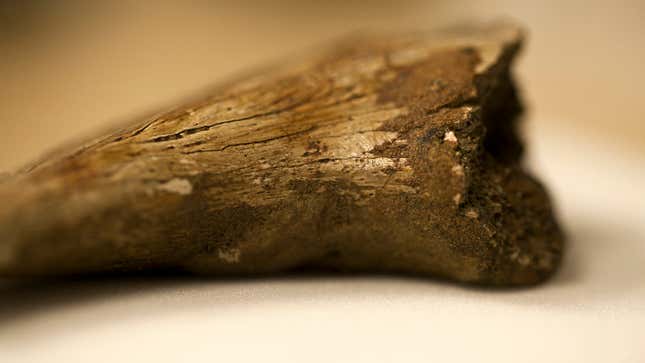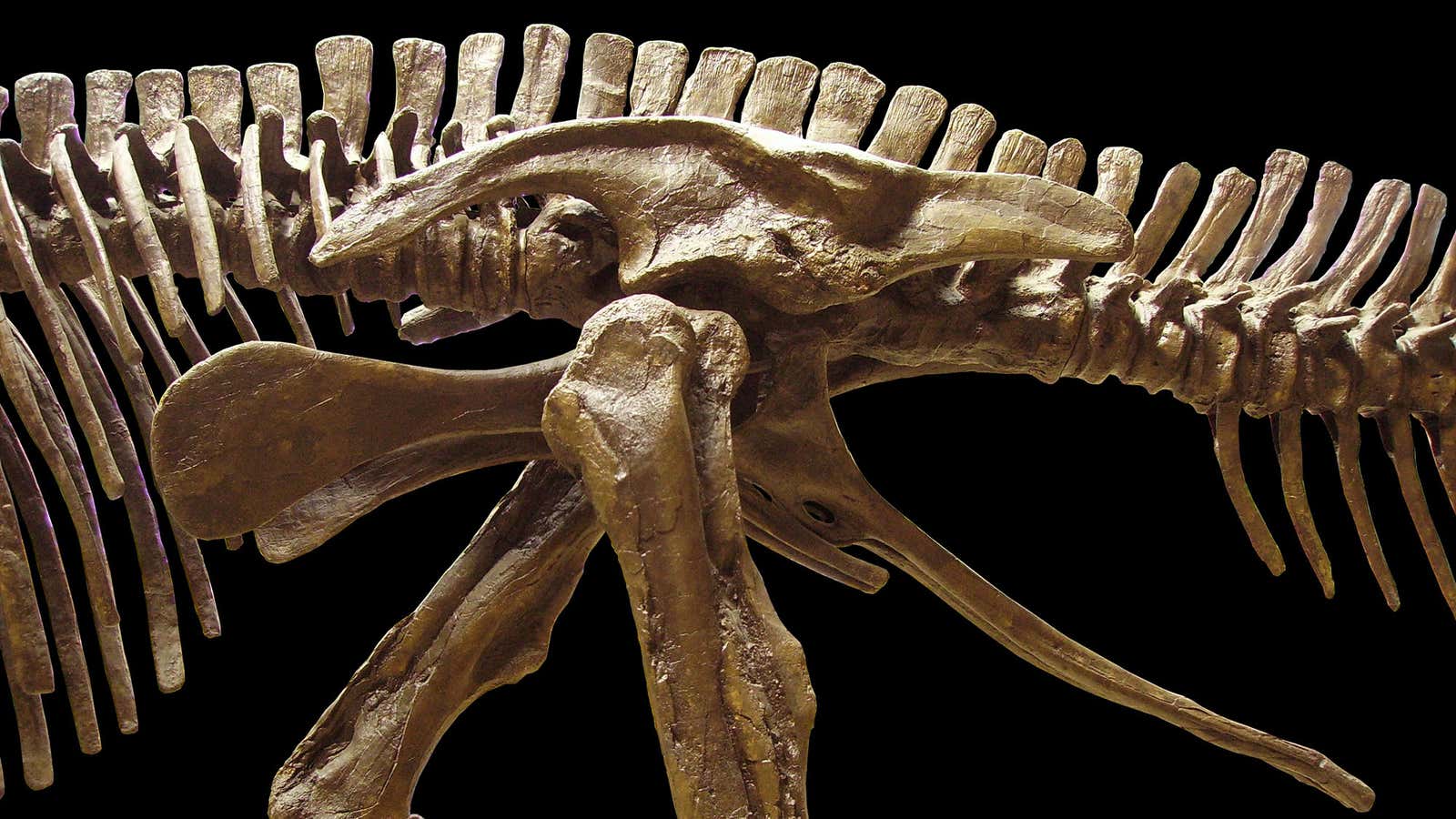There’s a lot we can tell about life millions of years ago from fossils dug up today, but dry bones cannot give us the full story. If we come across organic matter, such as blood or tissue, that can change our understanding completely—which is what makes the latest discovery by Sergio Bertazzo and his colleagues at Imperial College London so thrilling. The team announced in a paper published this week that they’ve found traces of blood cells and collagen in 75-million-year-old dinosaur fossils.
This isn’t the first time scientists have come across dinosaur organic matter. In 2005, Mary Schweitzer at North Carolina State University found transparent collagen in a Tyrannosaurus rex fossil. But Bertazzo’s finding is particularly interesting because the fossils were dug up in Canada about 100 years ago and were, as he described them, in “crap” condition. In fact, he wasn’t even looking for blood or tissue but, under a powerful electronic microscope, that’s exactly what he saw.

Though no intact DNA was found—dashing any dreams of resurrecting dinosaurs—the discovery opens up the possibility that other dinosaur fossils lying around in museums and labs around the world might have organic matter in them, too. If so, we could finally answer questions about dinosaur physiology, like how dinosaurs evolved from cold-blooded animal to warm-blooded birds.
The discovery also reminds scientists that, despite the drudgery of the daily grind, work can be full of surprises. You never know—even after decades of research in an area—new discoveries may be waiting in a dusty drawer in your basement.
